Artificial intelligence has been all the buzz over the past decade. These days it is frequently used in many business and tech areas, with neural networks and deep learning being the most prominent technologies. It is safe to say AI is here to stay for the foreseeable future.
Despite its ongoing popularity, building AI systems and apps is still a challenging process due to the ever-changing and evolving maturity of AI. It is not an easy task to keep up with technological advances and stay up to date with the progress.
We have compiled a guide to tell you all about how to do it and how to successfully create artificial intelligence software.
What Is Artificial Intelligence?
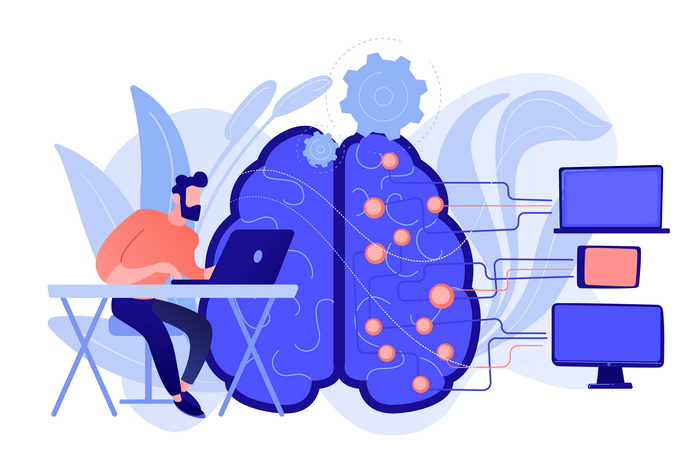
Originated in 1956, the term ‘artificial intelligence’ applies to a set of technologies, a sphere of knowledge, and properties of computer systems. Speaking broadly, ‘artificial intelligence is the ability of computers to mimic cognitive and creative functionality, which till very recently has been the ability solely attributed to humans, our brain, and intellect. For example, these systems can learn new information, solve problems, and train.
In computer science, AI is defined as the study of devices or systems that interact with their environment and act to succeed at a specific goal. The term is usually applied to the vast array of services and systems available today. Machine learning, being the subset of artificial intelligence, is one of the most prominent and popular areas of technology, associated with the biggest AI breakthroughs. Nowadays, machine learning is at the core of solving issues posed to artificial intelligence, it deals with building algorithms capable of learning.
The field of artificial intelligence has seen exponential growth and has become one of the leading software development areas. Statista’s data suggests that the global AI market will reach US$126 billion by 2025 because startups and companies in various domains actively leverage AI/ML technology to optimize their businesses.
Describe your idea and get an estimation for your AI project
Contact UsHow AI Works
AI apps based on machine learning and deep learning are the most widespread - and the most promising. They operate using neural networks, which can be defined as algorithms capable of learning new information and remembering their past ‘experiences’ to make assumptions about new data. They are sometimes compared to the human brain as they build graphs meant to represent human memory algorithms. The specificity of deep learning can be boiled down to two aspects:
- the use of a large amount of data - also called a dataset, which usually is a collection of photos, videos, texts, etc.
- computer power - training a neural network always requires a powerful GPUs
The main goal behind the development of AI software is to create applications, systems, and algorithms that are capable of self-training and learning. Data scientists create machine learning models which process large quantities of structured and unstructured data in various formats (like images, videos, text files, scanned documents, and audio files) so that developers can identify patterns in datasets and train AI using reinforcement learning.
What Business Problems Can Be Solved With AI?
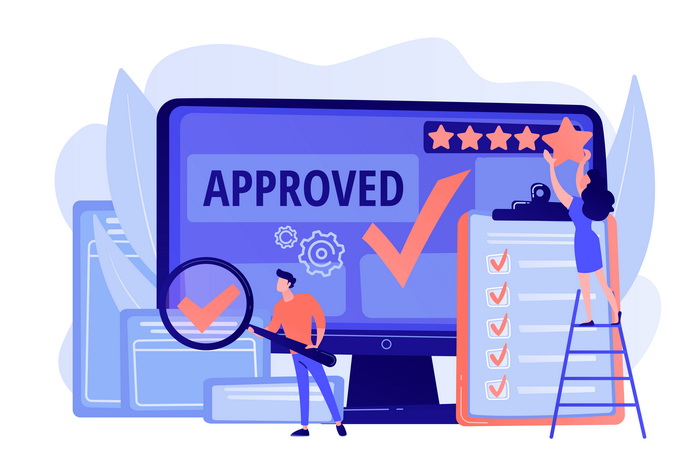
AI can be of great help to many businesses, so it can be wise to invest in the development of an AI system. Artificial intelligence systems can be versatile and solve a number of problems at many different levels of your business, from general business analytics and finance management to on-field equipment monitoring and predictive maintenance.
Fraud prevention
One of the most important tasks, especially in the fintech sector, is preventing payment fraud, credit card fraud, and account fraud. Artificial intelligence systems can help solve these problems and prevent fraudulent activity. In fact, many financial institutions have already embraced AI in their day-to-day activities. According to Mordor Intelligence researchers, AI will become a defining technology for the fintech industry. By 2026, the market will grow more than three times.
Cybersecurity
The growing use of AI-powered tools can help improve cybersecurity for many businesses. With the ongoing digitalization of businesses, cyber attacks have become more common and more sophisticated, and data breaches are very widespread even for well-established businesses.
One of the facets of cybersecurity is KYC, or ‘know your client’ - a set of measures meant to prevent account fraud and improve the data security of a given application. Banks and other financial institutions have been performing KYC screening for decades, albeit in more traditional ways like manual document checking. Artificial intelligence can help automate these practices and prevent account fraud, reduce impersonalization attempts and bot attacks. We have a guide on KYC screening using AI which dives deep into everything you need to know about the topic.
Manual labor reduction
One of the greatest advantages of an artificial intelligence system is the reduction of manual labor. Routine operations like document processing significantly slow down business operations, increasing business costs as a result. Here is how AI can help:
- Reduce manual document processing, including review, document compliance checks, verification, digitalization
- Optimize the number of employees, reduce the workload of existing employees
- Eliminate human error
- Improve customer service and increase satisfaction through intelligent automation
Business forecasting
One of the most useful facets of AI systems is their ability to train on historical data and infer future outcomes from it. This can greatly improve business decision-making quality as AI systems process massive data amounts during training. For example, AI can help determine how well a product will perform on the market and how popular it will be like a video game prediction AI we have developed before.
Predictive Maintenance
Manufacturing processes, like steel smelting or beverage bottling, highly depend on the quality f the equipment to keep the production going. A breakdown of even one machine involved in a process can put the entire production on hold. There is a strong incentive to locate worn-down equipment early and perform preventive maintenance rather than fix an already broken machine.
AI can perform predictive maintenance - detect early signs of equipment wear-down, thereby reducing idle time. One of the best examples of this application is a beer bottling factory that implemented AI to help detect faulty equipment.
Market Analysis
AI can be of great help to marketers as it can analyze large amounts of data in a matter of seconds. This can be useful for product research and customer review analysis, which goal is to determine what the customers think of a particular product. Take a look at how marketing strategy can be augmented using AI in our overview.
What Does It Take to Get Started?
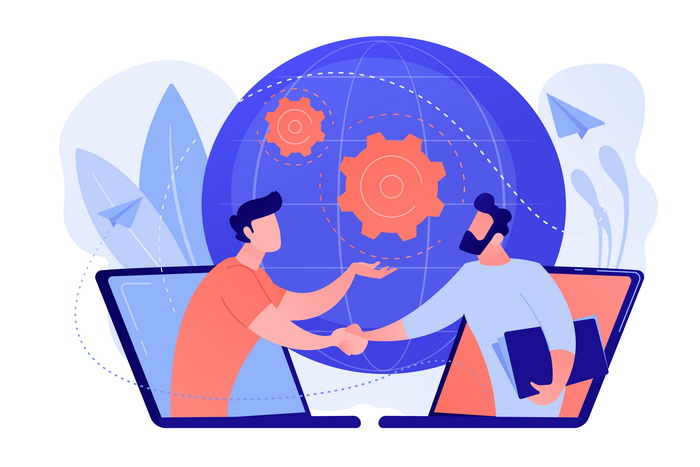
The very first step is to determine if your AI idea is feasible, meaning the current level of AI technologies meets the requirements of your project. Before diving head-first into AI development, it is very important for you to understand not only the tech behind it, but also the money involved.
Verify Your AI Idea
Not every AI is feasible - AI has its limitations which are not always obvious to someone just introducing themselves to the field. Before you start dedicating time and money to AI implementation, you need to calculate the risks - see if it's possible to implement your idea given the current state of AI, check if the cost will be worth it, and see what data you need to prepare.
The best way to go about AI idea validation is to consult with seasoned AI developers to get their professional point of view, as well as get an accurate assessment of your idea and how AI can help you.
Here are a few crucial steps that need to be performed before diving headfirst into AI:
Analyze Dataset Quality
If you already have a dataset, you need to check its quality (from an AI point of view) and balance. It’s better to start with a high-quality dataset rather than frantically looking for ways to gather more data in the middle of development.
Build Prediction Models And perform Accuracy Assessment
Prediction models will help you understand how efficient you can expect your AI system to be. In some cases, there's a cap to the performance accuracy depending on the nature of the problem, the dataset, technologies used, etc.
Build an Initial Prototype
Proof of concept is an important step before going all in and starting full-on development. A prototype shows you a glimpse into what the future system will look like, making it a perfect step to either continue with the development or stop due to poor prototype performance.
Generate Assessment Documentation
This step includes a thorough overview of all of the testing activities performed, as well as insights and advice on where to take your project next.
For a more thorough breakdown of the AI idea verification process, check out our ‘How To Know If Your Business Needs AI’ guide.
Collect Data
The basis of every AI system is a dataset - a collection of data relevant to your business that will be used to train the neural network. It is always better to start with a dataset, but if you don’t have one, it is important to set aside time in the project for data collection, sorting, and labeling. Labeling can be done automatically or manually, however, a labeling team is always a must.
Here are the various data types which can be included in your dataset:
- Photos and videos - the most common data type when it comes to computer vision systems, it is required to train visual analysis systems
- Audio - audio data is converted into visual data, like a spectrogram, and then analysed visually
- Sensor data - it is also converted into visual data for the purposes of training an algorithm
- Documents - scanned or digital, analyzed as images
- Text - NLP systems can take text as input and perform various types of analysis, like extraction of customer sentiment and main topics
The basis of every AI project is a machine learning model. Before working on it, we need to:
- Choose an algorithm and type of learning (supervised, unsupervised, reinforcement)
- Check the dataset is organized, balanced, and labeled
After the data has been prepared, we can choose a platform and programming languages.
Platforms
There are multiple AI platforms available complete with tools for system development. They differ from each other in the required level of expertise, as some platforms require a lot of coding experience to use them.
Platforms commonly used to develop AI software are:
- Google. It includes AI Hub (a collection of information useful for AI app development), AI Building Blocks, and AI Platform, which is a code-based data science environment for creating projects from idea to launch.
- Microsoft Azure. Azure has vast capabilities, like apps and agents, knowledge mining, and various ML services. Using Azure one can create, train, and deploy models. It has some built-in AI capabilities, like pattern identification, sentiment analysis, and NLP analysis.
- Amazon Machine Learning. Combined with Amazon Web Sevices, it is a powerful platform as it allows not only to create and train ML models of various complexity but also simplifies app building and delivers out-of-the-box analytics. It is praised for its seamless integration with products and simple routine procedures.
Other AI platforms include Oracle AI cloud services, Python-based Melissa platform, an H2O ML platform with linear scalability, and more. The development team chooses a platform depending on the project needs, model type, size, and quality of the dataset.
Programming Languages, Libraries, and Frameworks
Here are the most common programming languages used during AI development:
- Python. It offers unique algorithms beyond standard programming, easily integrates with data structures, and has a vast array of libraries and tools like Scikit, NumPy, and others.
- Java. An object-oriented language with various tools for developing multi-threaded applications
- C++. A performance-driven language that allows the development of both fast and highly-complex apps. C++ suites are best used in complex apps with immediate user interaction and high-speed animations.
And here are some examples of AI tools that can be used in the development process:
- API.AI - a Google AI tool compatible with Android and iOS with support of Node.js and Cordova
- TensorFlow library- an open-source product useful for the development of deep machine learning systems
- IDEs and Jupyter Notebooks - ML-as-a-Service platforms for graphical user interfaces
- Frameworks like Caffe, PyTorch, scikit-learn
Looking for AI developers?
We create AI software — and we do it well. Talk to us to get your project started today
How to Build AI Software
Most AI systems have a basic development pipeline and can be described as follows:
- Dataset analysis
- Prediction models and accuracy assessment
- Initial prototype
- Assessment documentation and team planning
- Minimum viable product (MVP) development
- Launch and support
Let’s dive deeper into each step of the process using our own AI development process as an example.
Dataset Analysis
Every good AI project starts with the ‘Do you have a dataset?’ question. Data is crucial when developing an AI system since modern machine learning algorithms revolve around using a large dataset to learn. The more data you ‘feed’ to an AI algorithm, the more accurately it will perform.
Machine learning specialists need to take a look at your dataset, assess its quality and check how balanced it is. If the dataset is not large enough or the data is not useful for AI development, we will outline what data (and how much of it) needs to be added to the dataset.
Prediction models and accuracy assessment
We will create prediction models which help to understand how efficient you can expect your future AI system to be. Some projects, due to their requirements or the current state of AI tech, have a predetermined performance cap which is important to determine before diving deeper into the development process.
Initial prototype
Before taking on any AI project, we always create an initial prototype that serves as a proof of concept. At this stage of the development, you will see what a future system will look like and how it will perform, allowing you to make an informed decision on whether the system will meet your expectations or not.
Assessment documentation and team planning
We will prepare a thorough overview of all of the testing activities performed, as well as insights and advice on where to take your project next. If you are happy with the results, we will form a group of ML developers to work on your project according to the provided project outline.
MVP development
At this stage, we will start working on your project, keeping you up to date with how the development process is going through daily updates.
Launch and support
After the system is finished, we will ensure the launching process will go smoothly. Our team will monitor the system closely for a period of time after launching to ensure everything works as intended.
In case you need to augment the dataset with more data or expand the functionality of the system, we will label new data, retrain the model, and test it.
How much will your project cost?
Order an initial consultation and get an accurate cost estimation and project roadmap
Our Use Cases and Advice
Over the two decades, we at Businessware Technologies have developed numerous AI systems of various complexity and business domains. Here are some of them.
AI-powered Aspect Extraction System For Amazon Reviews
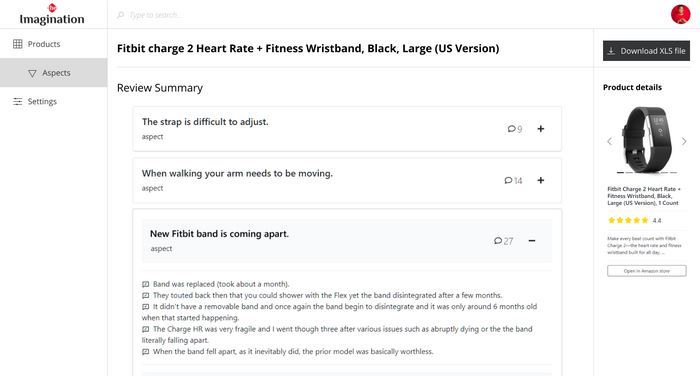
Our client is a marketing agency helping businesses to market their products on major marketplaces like Amazon. Since online shopping grew in popularity exponentially in the last couple of years, the competition within the online marketplaces has grown to the point where just putting the product online is not enough to achieve high sales. Product marketing now can give businesses a crucial advantage over their competitors, and a consumer-driven marketing campaign can significantly boost sales.
Our client has approached us to create a system that would analyze Amazon reviews and show the customers' feedback about the product in a form of product aspects, like what they liked and disliked about the product, what they found to be surprising or unusual, etc.
The system we have developed uses Amazon API to extract Amazon reviews for any given product. After the reviews are extracted, the system splits reviews into sentences, groups them by topic, and chooses a sentence that best describes the topic. Results are presented in a form of aspects - main themes extracted from reviews. Each aspect can be expanded to see sentences from which the aspect was extracted.
AI-powered Digital Media Recommendation System
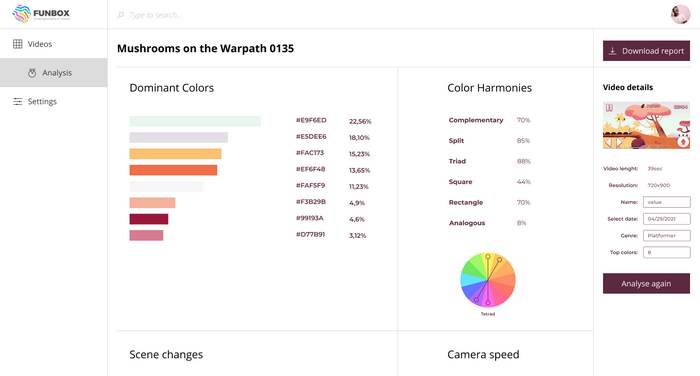
Our client is a production company that helps creators promote media content, like mobile and browser video games, attract more customers and generally increase its popularity. In order to give more accurate recommendations and determine which projects will be successful in the future, our client asked us to develop a system for analysis of digital media, like a video game recording.
We have developed a system that determines the video frame rate, dominant color groups, scene changes, and camera speed. Using this information, the system compares the video game against others and makes a prediction about its market success.
PDF files recognition system for an architectural bureau
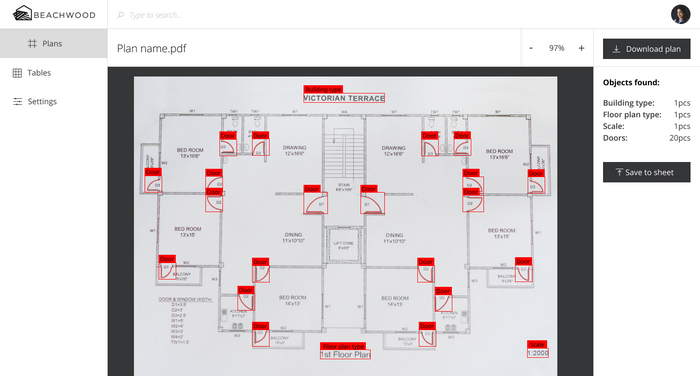
We have created a floor plan recognition system that helps specialists of an architectural bureau to prepare a bill of quantities and provide a price estimation. The system extracts the following information from a scanned floor plan:
- Building type - office building, shopping mall, apartment building
- Floor plan type - electrical, plumbing, etc.
- Scale ratio
- Special symbols like doors, windows, bathroom fixtures
Conclusion
This guide provides a basic outline of what goes into the development of AI software. If you have any questions left, we provide AI consultation and validation services.
If you are looking for a reliable AI development partner, you can check out our AI projects and send us your project information to start the development process.
